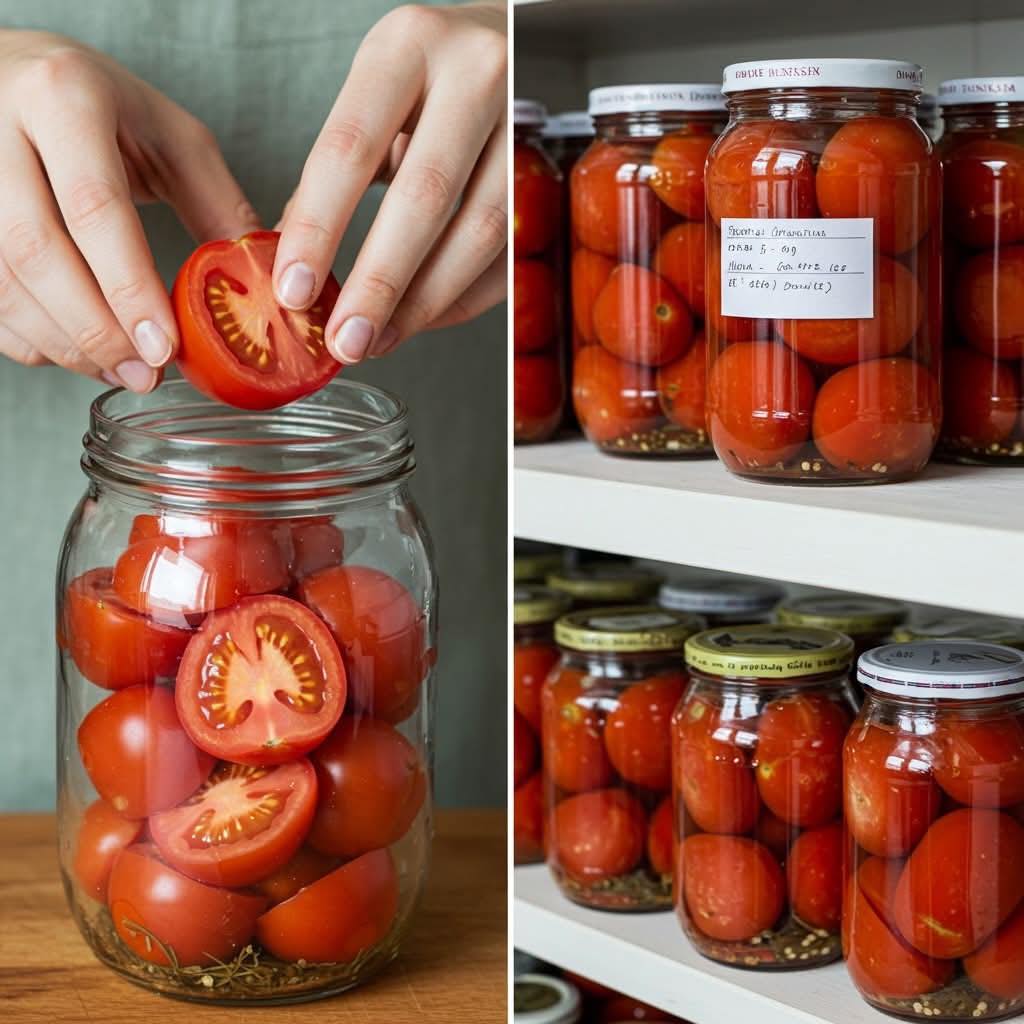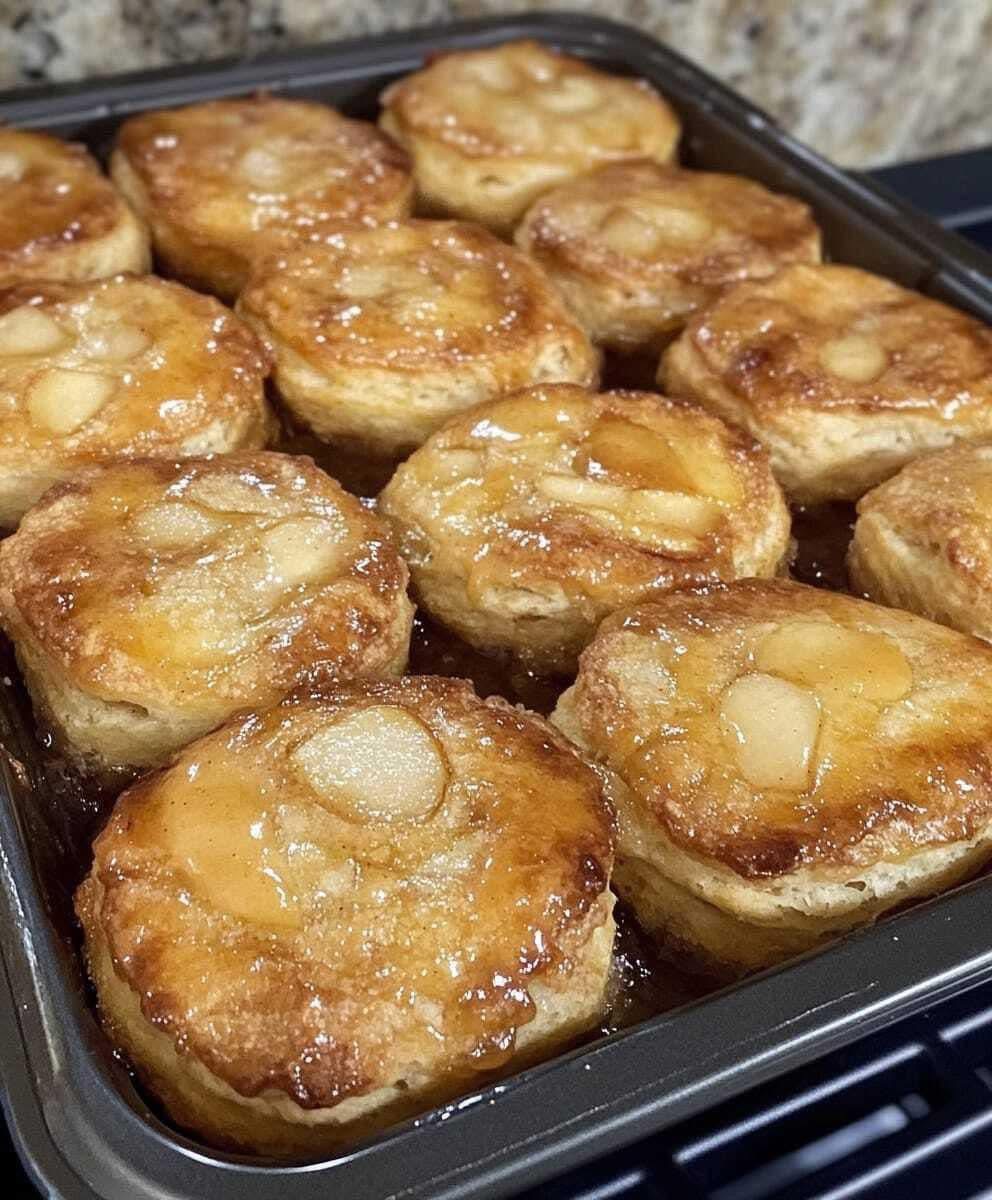The Infallible Method: Preserving Tomatoes Without Vinegar
Introduction
Imagine a chilly winter evening when you decide to make a hearty stew or a comforting tomato sauce. You walk over to your pantry, open a jar, and find fresh, vibrant tomatoes, bursting with flavor as if they were just picked from the garden.
This isn’t a fantasy — it’s the promise of a preservation technique known as the “infallible method,” which claims to store tomatoes for up to two years without using vinegar or acidification. Popular among homesteaders and traditional food preservation enthusiasts, this method relies on careful control of moisture, oxygen, and storage conditions to keep tomatoes fresh and safe for long periods.
Ingredients
The ingredients for this method are simple, yet the quality and care with which they are handled are paramount. Here’s what you’ll need:
Fresh, ripe tomatoes (firm, blemish-free, and at the peak of ripeness; avoid overly ripe or cracked tomatoes)
Sterilized glass jars (Mason jars or any canning jars rated for preservation)
Sterilized lids (Ensure the lids are also made for long-term preservation)
Clean towels (for drying the tomatoes)
Boiling water (for blanching, if desired)
Ice water bath (for cooling the tomatoes after blanching)
Sterilized utensils (to handle the tomatoes without contaminating them)
Optional food-safe desiccants (to absorb any excess moisture in the storage area, not inside the jars)
Instructions
Select the Right Tomatoes
Start by choosing the perfect tomatoes. Look for firm, ripe tomatoes that are free from cracks, bruises, or signs of disease. Heirloom varieties are often ideal, but any sturdy tomato will work. Select tomatoes that are as uniform in size as possible to ensure consistent packing and even preservation.
Wash, Dry Thoroughly & Optional Blanching
Washing: Rinse the tomatoes under clean water to remove dirt, dust, and any residues.
Drying: Use clean towels to pat the tomatoes dry completely. Moisture is the enemy of preservation, so take the time to ensure they are thoroughly dried.
Optional Blanching: Some versions of this method suggest briefly blanching the tomatoes. Immerse them in boiling water for 30-45 seconds, then transfer them immediately to an ice water bath. This helps deactivate enzymes that could cause spoilage or texture degradation. After blanching, dry the tomatoes thoroughly again.
Sterilize Jars and Lids
To ensure the jars and lids are free of any bacteria or mold, sterilize them. Submerge the jars and lids in boiling water for 10 minutes. Let them dry upside down on a clean, dust-free surface to prevent contamination.
Pack the Tomatoes Carefully
Pack the tomatoes gently into the sterilized jars. Make sure to pack them tightly but without crushing them. Leave about ½ inch of headspace at the top of the jar (about 1.3 cm). As you pack the tomatoes, use a sterilized utensil to gently release any air bubbles trapped between the tomatoes.
Seal and Vacuum
Once the jars are packed, place the sterilized lids on them and screw on the metal bands, making them “finger tight.” If you have a vacuum-sealing mechanism available, use it to draw out as much air as possible before sealing. The less oxygen in the jar, the better. A tightly sealed, vacuum-packed jar will greatly reduce the chances of spoilage.
Label and Store
Label each jar with the date of preservation and the type of tomatoes used. Store the sealed jars in a cool, dark, dry location, such as a pantry or root cellar. The ideal temperature for storage is between 10-13 °C (50-55 °F), and there should be minimal fluctuation. Avoid direct sunlight, high humidity, or exposure to heat, as these factors can compromise the preservation effort.
Tips
Control the Environment: As this method is highly dependent on controlling temperature, moisture, and oxygen levels, make sure the storage area remains consistent and cool. Avoid storing jars near heat sources, like ovens or heaters.
Use Quality Jars: Always use jars that are designed specifically for canning or preservation. These jars are built to withstand the pressure of sealing and vacuuming. Make sure the lids are also rated for long-term storage.
Moisture Control: If you’re concerned about moisture levels in your storage area, consider adding food-safe desiccants (silica gel packets) to the space around the jars (but never inside the jars).
Test the Method: If this is your first time attempting this method, start with a small batch of tomatoes. Monitor the jars closely over the first few months to ensure the preservation process is working well.
Monitor Regularly: Check the jars periodically for signs of spoilage. If you notice any bulging lids, unusual smells, or visible mold, discard the jar immediately.
Storage
Proper storage is crucial to the success of this preservation method. Store your sealed jars in a dark, cool environment, away from direct sunlight and fluctuating temperatures. A root cellar or a dedicated pantry is perfect for this. Aim to keep the temperature around 10-13 °C (50-55 °F). If your home doesn’t have an ideal storage space, consider using a cool basement or a cellar.
For long-term preservation, it’s important to monitor the jars regularly. Check for any signs of spoilage such as bulging lids, mold, or an off smell. If the jar has been compromised, discard it immediately. Keep track of the jars in storage using the “first in, first out” method to ensure older jars are used first.
Serving Suggestions
Preserved tomatoes, while softer in texture, are still perfect for use in cooked dishes. Here are a few ideas on how to use them:
Tomato Sauces: These tomatoes make an excellent base for pasta sauces, marinara, or pizza sauce. Simply drain the excess liquid and cook them down into a rich, flavorful sauce.
Soups & Stews: Add the preserved tomatoes to any soup or stew for a burst of flavor. They’ll rehydrate during cooking and contribute to a rich, tomato-forward dish.
Salsas & Marinades: Incorporate the preserved tomatoes into your homemade salsas or marinades for a deep, cooked-tomato flavor.
Cooking Bases: Use them as the base for chili, curry, or shakshuka. Their softened texture works well in slow-cooked, hearty dishes.
Tomato Paste or Concentrate: You can simmer the preserved tomatoes to make a concentrated paste, which is perfect for recipes requiring intense tomato flavor.
Final Thoughts
While the vinegar-free preservation method for tomatoes can yield a fresh, garden-like flavor, it’s important to understand the risks involved. The method relies on perfect control over moisture, oxygen, and temperature, which makes it more susceptible to spoilage than traditional methods like canning with acid.
However, if you’re careful, experimental, and willing to monitor the process, this could be a rewarding way to enjoy fresh-tasting tomatoes all year round.
For those unsure about the risks or looking for more tested techniques, traditional methods such as acidifying with vinegar or using a pressure canner may be more reliable. Regardless, the infallible method offers a fascinating look into preserving food in a more natural, flavor-forward way.
-
Garlic Butter Beef Pasta
Few dinners hit the sweet spot between comfort, flavor, and ease quite like Garlic Butter Beef Pasta. This dish is rich, creamy, and deeply satisfying, yet simple enough to make on … Read more
-
apple pie biscuits
Here’s a more detailed version of the Apple Pie Biscuits recipe with a total of 17 paragraphs, covering the entire process from introduction to conclusion: Introduction: Apple pie biscuits are … Read more
-
German Cabbage and Dumplings
Few dishes capture the comfort and simplicity of old-world home cooking quite like German Cabbage and Dumplings. This recipe comes from a tradition of making something deeply satisfying out of humble, … Read more



